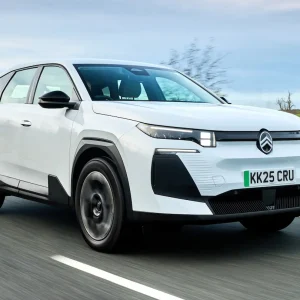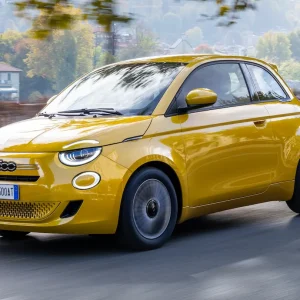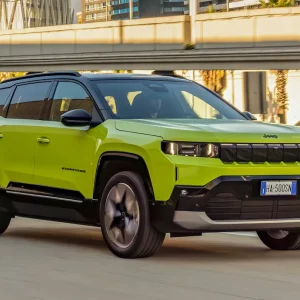Compared to other Stellantis brands such as Citroen and Vauxhall, it seems Peugeot has been slow to fully electrify some of its popular market segments, such as the C-segment hatch. Still, despite the effects of the pandemic and subsequent chip shortage supply issues, the E-308 did make it to market just before its mechanically similar sister car, the Vauxhall Astra Electric.
Like the Astra Electric, the E-308 has a 156hp synchronous electric motor, which develops 270Nm of torque and is powered by Stellantis’s next-generation 54kWh lithium-ion battery. Acceleration to 62mph takes 9.8 seconds (just behind the Astra’s 9.2-second figure), with the top speed being 106mph. Performance is best described as willing rather than fast as the Peugeot, and like the recently uprated Citroen E-C4, all the performance can only be accessed by selecting the ‘Sport’ driving mode. Despite the rather leisurely performance, Peugeot is claiming a credible 257-mile range. Although, during the week we had this car we couldn’t achieve more than 220 miles to a full charge. The relatively small drop in range, is the result of the E-308 being fitted with a standard high-performance heat pump, equalling decent efficiency, even if the weather is extremely hot or cold. It is capable of 100kW rapid charging, equalling a 20-80% charge in just 30 minutes.
The E-308 starts off smoothly, keenly, and quietly in ‘Normal’ mode, which like the Vauxhall Astra Electric, we think is fine for most of the everyday driving you’ll do. The other modes are ‘Eco’ which is fine if you’re saving range and ‘Sport,’ which equals more sensitive throttle settings – although even in ‘Sport’ mode, the performance is most willing at lower speeds.
Where the E-308 and Astra Electric differ is in the dynamics. Whereas the Vauxhall is all about the refinement, the Peugeot adds keenly weighted and responsive steering. Then, when it comes to the corners, the E-308 feels eager when changing direction and demonstrates sharper body control. Finally, like the Astra Electric, the E-308 has a refined ride despite the standard 18in wheels. Like the Vauxhall, this Peugeot can’t quite mask the extra weight of the battery when on the move – road imperfections are definitely more obvious. Finally, when it comes to stopping, the brakes seem far less snatchy, but are harder to modulate compared to the ICE version.
Already one of the more distinctive members of the C-segment, in either hatch or estate form (the Electric Station Wagon comes later). Outside, the only changes for the Electric version is the new and bespoke ‘Ottawa’ alloy wheels and ‘e’ badging.
Inside, the gap between the E-308 and Astra Electric is more obvious. There’s nothing wrong with the interior of our current family car favourite the Vauxhall, but the quality of the plastics – especially the dashboard, is a step up in the Peugeot. However, Peugeot’s i-Cockpit with its tiny steering wheel, takes a while to get used to. Space in the front is fine, but rear legroom is no better than average, with the 361-litre boot for the hatch being slightly bigger than the Astra, but is still practically shaped and unaffected by the fitment of the battery.
This electric hatchback version of the latest 308 is an attractive addition to the already distinctive Peugeot range. Like the Vauxhall Astra, there seems to be few compromises in the move to EV. Although, the Peugeot offers more for the driver, with its keener dynamics. Once drivers get used to the i-Cockpit, the E-308 has a more premium feel to its interior. If you can handle having a Lion on your grille – rather than a Griffin – the 308 costs less in the first place but the Astra owner has the last laugh with better residuals at the end of a three-year term.
Peugeot E-308 GT 54kWh
P11D: £42,065
Residual value: 35.7%
Depreciation: £26,140
Fuel: £3,545
Service, maintenance and repair: £1,968
Cost per mile: 52.75p
Range: 257 miles
CO2 (BIK %): 0g/km (2%)
BIK 20/40% a month: £13/£26
Luggage capacity: 361 litres
Battery size/power: 54kWh/156hp





